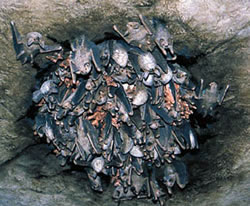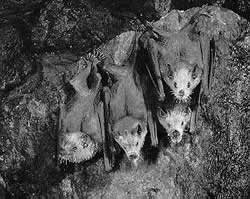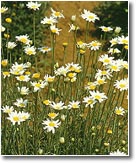
Preview
Material for Exam 2 - Fall 2004
Print
the PDF version (few pictures, better printing)
The beginning of the war in Iraq was marked by the U.S. military’s fear of weapons of mass destruction (WMDs), with chemical agents leading the list of threats. For that reason, key combat personnel were issued syringes of atropine, an antidote to certain deadly chemical agents. An Army reservist (and a former BIOL 1114 student) read the instructions on his syringe that included the following:
“ Atropine sulfate-- a postsynaptic antagonist (blocker) of acetylcholine
receptors; will cause dry mouth and extreme thirst; potent muscle relaxant causing
paralysis in sufficient doses; causes delirium and fatality in high doses; use
with extreme caution.”
 source U.S.
soldiers learn to protect themselves against VX exposure
source U.S.
soldiers learn to protect themselves against VX exposure 
Normal
source

source
To test her hypothesis, on each individual in an experimental group of flowers she tied a piece of yarn around the spur, closing it off so that the fly could reach only 35 mm into the spur with its proboscis. These flies could not make contact with the flower's reproductive structures when they inserted their proboscis into the shortened tube of the spur. In a group of control plants, she loosely tied a piece of yarn on each spur. In these plants, the spurs were not closed off at that point and the flies could reach the usual distance of 49 mm to the end of the spur. Thus, the flies would make contact with the reproductive structures. She found that 41% of the control flowers set seed (containing the next generation of orchids) and 18% of the experimental group flowers set seed.
The population of orchids that is pollinated by tanglewing flies lives at low elevations in the sandplain. Another population lives at higher elevations in the mountains. The horsefly, which has a much shorter proboscis than the tanglewing fly, is the pollinator of the high elevation orchids. The biologist wants to test whether members of the high elevation population and members of the low elevation population belong to the same species. These orchids can be hand-pollinated by the biologist; that is, the biologist can collect pollen from one plant and brush it on another plant.
In an experiment to evaluate the effects of altitude on seed production in orchids, a researcher took equal numbers of the high elevation orchids and low elevation orchids and grew them at three different elevations – 4000, 6000, and 8000 feet.
 source
source source
sourceArizona is home to at least 28 species of bats. These species feed on nectar, insects or other invertebrates. They are found in a variety of habitats, including sonoran/desert scrub, pine/fir forests, riparian (along waterways) forest, oak chaparral and Mohave Desert scrub. The bats roost (sleep and breed) in a variety of places including abandoned buildings, under bridges, in caves, and trees.

source

source

